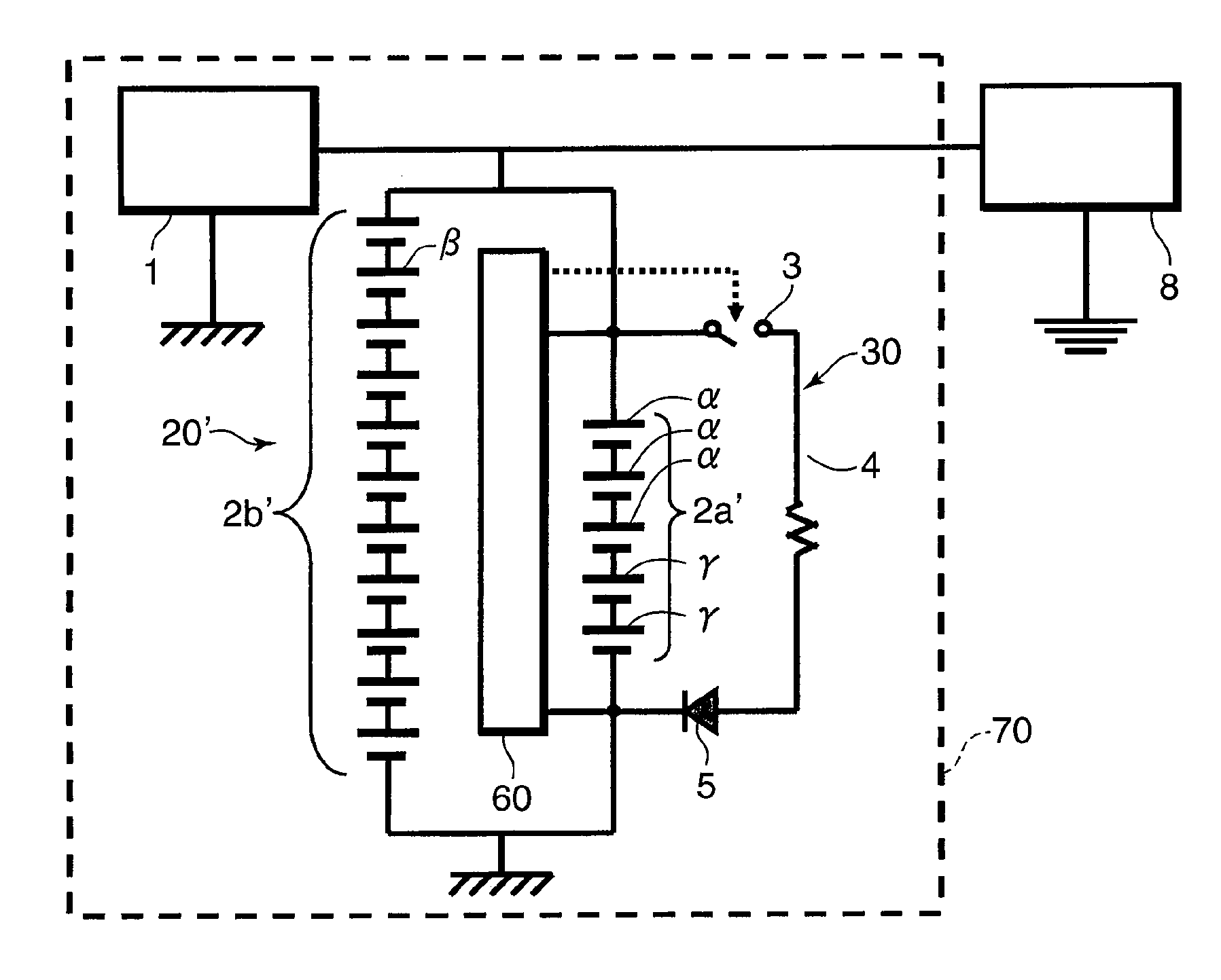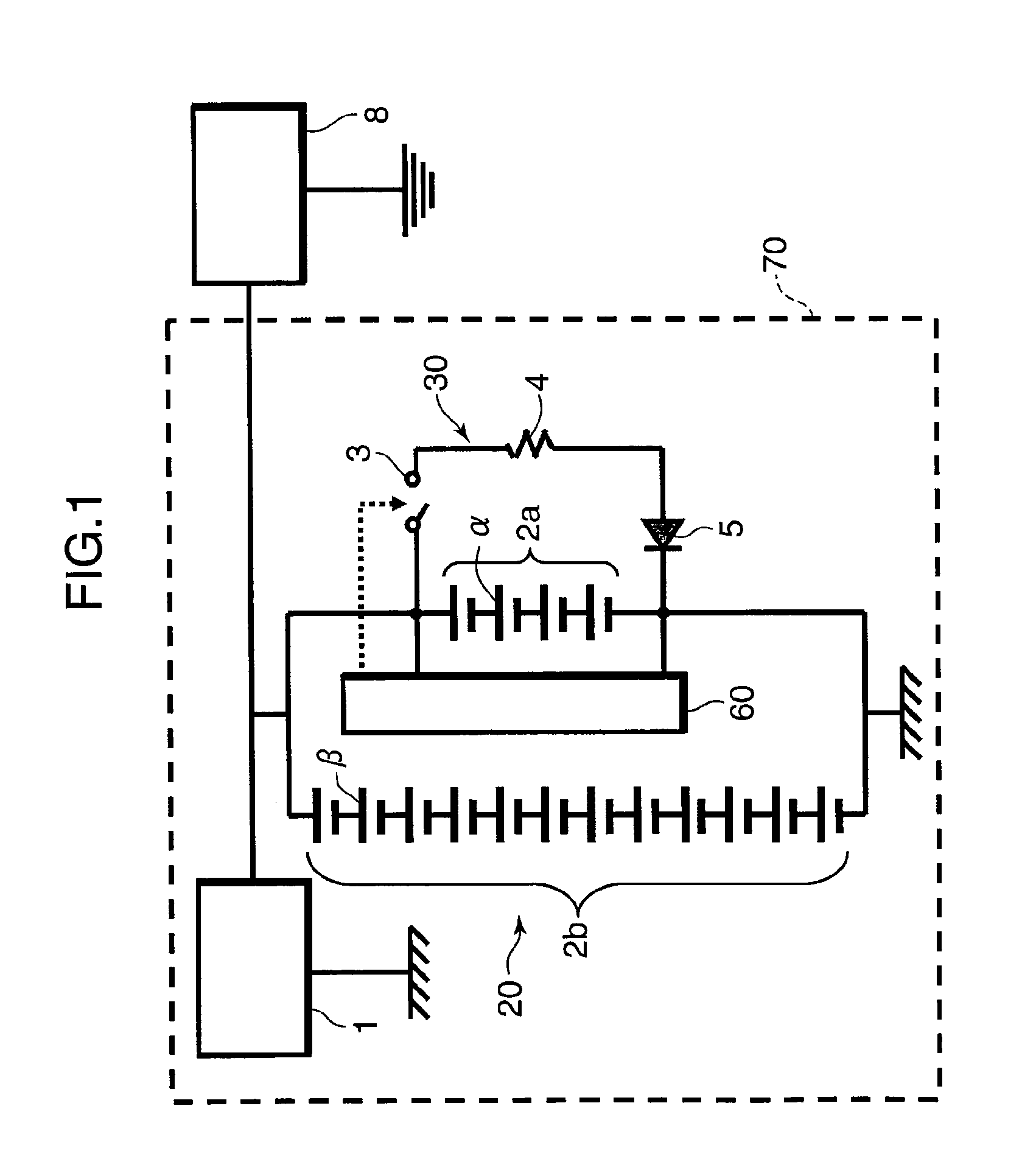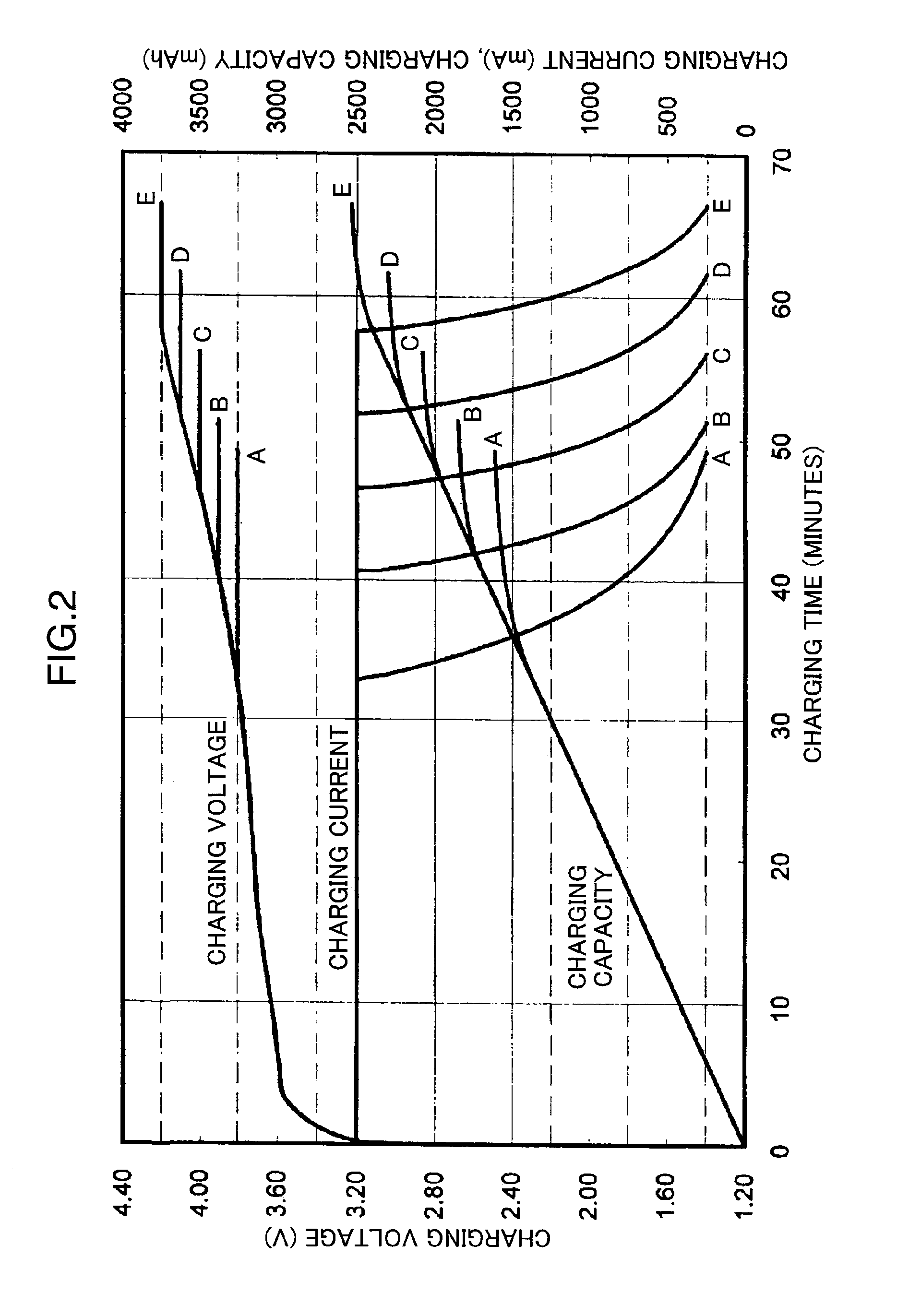Power supply system and cell assembly control method
a power supply system and cell technology, applied in the field of power supply systems, can solve the problems of inability to say, deformation of the cells configuring the assembled battery, and inability to meet the needs of secondary batteries, and achieve the effect of inhibiting the deformation of secondary batteries and high energy density
- Summary
- Abstract
- Description
- Claims
- Application Information
AI Technical Summary
Benefits of technology
Problems solved by technology
Method used
Image
Examples
Embodiment Construction
[0022]The best mode for carrying out the present invention is now explained with reference to the attached drawings.
[0023]FIG. 1 is a block diagram explaining the configuration of a power supply system according to an embodiment of the present invention.
[0024]As shown in FIG. 1, the power supply system 70 comprises a generator 1, a cell assembly 20, a forced discharge unit 30 and a control unit 60. The generator 1 is used for charging the cell assembly 20 and, for instance, is a generator that is mounted on a vehicle and having a constant voltage specification for generating power based on the rotary motion of the engine. The cell assembly 20 includes a first assembled battery 2a in which a plurality (four in the configuration of FIG. 1) of cells α (first cells) are connected in series and a second assembled battery 2b in which a plurality (twelve in the configuration of FIG. 1) of cells β (second cells) are connected in series, and the first assembled battery 2a and the second asse...
PUM
 Login to View More
Login to View More Abstract
Description
Claims
Application Information
 Login to View More
Login to View More - R&D
- Intellectual Property
- Life Sciences
- Materials
- Tech Scout
- Unparalleled Data Quality
- Higher Quality Content
- 60% Fewer Hallucinations
Browse by: Latest US Patents, China's latest patents, Technical Efficacy Thesaurus, Application Domain, Technology Topic, Popular Technical Reports.
© 2025 PatSnap. All rights reserved.Legal|Privacy policy|Modern Slavery Act Transparency Statement|Sitemap|About US| Contact US: help@patsnap.com



